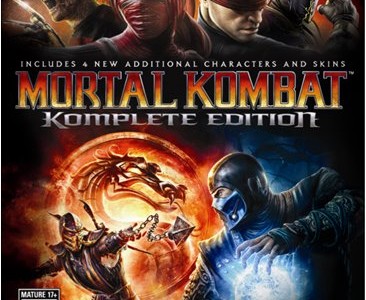It’s strange to think of the video game as a reflective medium because it’s still relatively young. Mario just recently turned 25, which means he could still be bumming around his parent’s house looking for work. The same goes for Link and Zelda, a progressive, earthy couple sharing a one-bedroom flat debating free-range meal options. It’s even stranger, then, to think that Mortal Kombat was first released 20 years ago and has now begun to look back on its own sensational, arrant life.
Packaged with Mortal Kombat Komplete Edition is a myriad of nostalgic trinkets beset on wooing die-hard followers: a digital download copy of MK-inspired music, a digital copy of the 1995 Mortal Kombat film, 15 different skins (some of which are the original outfits), and original fatalities for Scorpion, Reptile, and Sub-Zero. Most of these items were only available via DLC when the in-komplete Mortal Kombat was released about a year ago, making this the definitive version.

Mortal Kombat Komplete Edition doesn’t forget where it’s come from, and neither should players. In Story mode, the game rewinds the clocks and takes us through the first three installments in the series, battling as an all-too familiar presidium of monks observes. That this series has remained relevant, still begat by 90s tongue-and-cheek humor, proves its talent. From Johnny Cage’s pink tuxedo to the mannish, Amazonian warriors losing suggestive pieces of attire during battle, MK’s steadfastness has resulted in few alterations.
For someone like me, who has been playing since childhood with only frayed ideas about character origins, witnessing the birth of later character additions – Kabal, Ermac – instills a sense of completeness that would otherwise be lost to MK wiki pages.
Age comes to all of us, though, and MK is no exception. The garish, execrable splendors of gore that once shook a nation now elect a blip of discomfort. Fatalities are back in full swing along with the recently added X-Ray attacks. Other than a few notable, disturbing executions (Noob Saibot is an evil man), oversaturation has somewhat de-fanged these snippets of mutilation. They’re still enchanting for some unsettling reason, but the ferocity has dulled.
Still, there are few things in this gaming realm as satisfying as those couple of seconds before landing the final hit, hearing the iconic announcer’s call, and successfully executing the coup de grace. From the anxious input of the correct button combination to the gratifying sound cue and darkening of the screen, the emotional impact fatalities remains strong.
The same cannot be said for the other elements in MK, even 20 years later. The precision and depth of other fighting game franchises has thinned the series. The MK games always sold more on the show rather than the technicalities, but there’s a reason they still sell and it’s just as dominant as ever.
Looking back, watching the Mortal Kombat film, listening to the trance and dub step tracks of the MK album (whose inspiration from the famous pulse theme is warming) and playing this cult franchise has revealed that there hasn’t been much maturation. And there probably won’t be, but it’s not a bad thing. MK’s stubbornness hasn’t detracted from the series’ uncouth charisma. On the contrary, it has only validated and solidified it.
The MK series is a bridge to a fossilized time; it transports players back to days when the savory mix of dank arcade cabinets and a fleet of change machines ruled the gaming landscape. A time when hearing the growling “Finish Him!” as your opponent sways was, and still is, an achievement all its own.


















